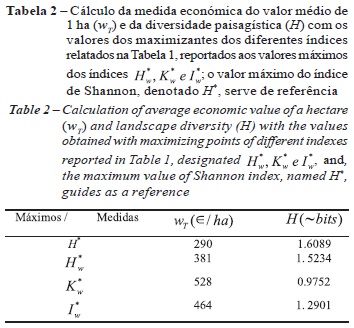This work presents a set of indices of information on the composition of landscape mosaics which extends to the concept of ecomosaic. These indices are successive generalizations of the Shannon function, used to measure landscape diversity, and interpreted as statistical entropy, or average value of information of a canonical system, a macroscopic parameter of a stochastic system; the formulas can also be considered to represent average or expected values of preferences, related with utility functions used in a broad sense of the concept. The information indices discussed in this paper are exemplified by a hypothetical scenario planning in the region of Nisa, Portugal, characterized by economic indicators of the value of forest habitats. The indices are also used to anchor a reflection that goes around three beacons relating to the concept of information: the Theories of Situation, Relevance, and Decision. The whole exercise may be seen as an abduction procedure, running a rational strategy that can serve as a basis for decision-making on the planning of the territory or also, it serves to investigate dynamic changes in the composition of the landscape mosaic. In the case exemplified the indices show that the cork oak and the umbrella pine forests are, by far, the most promising habitats in the region, under a scenario with no biophysical constraints.
Information values; Characteristic values and Expected utility




